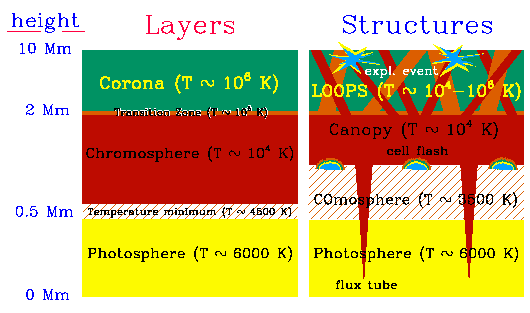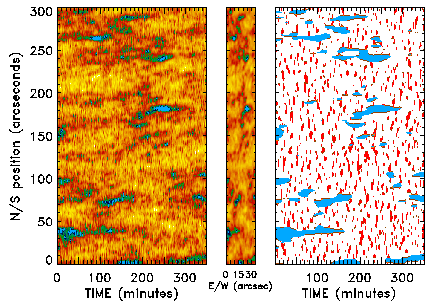
I'd like to discuss a few somewhat philosophical things, and then at the end take a tangent into an area I'm particularly interested in, the structure of stellar atmospheres.
I did a lot of thinking about the whole question of solar analogs before coming to this meeting, and it struck me that there's a lot of discussion about ``this star is solar twin of the year,'' and ``that star is solar analog of the year,'' and so forth, and I wondered, why do we care about just having one twin, one star that is the closest to the Sun of them all? After all, we have the Sun, which as has been said, is the optimum twin for itself.
So after I thought about this, and from listening to the talks yesterday, I decided that having one or more solar twins is quite valuable, for a whole lot of reasons.
First of all, these stars are valuable not as twins but as surrogates, as things we use in place of the Sun. For example, in planetary astronomy, we would use them to obtain a spectrum of the Sun, in the absence of the Sun itself, with the same instrument you might use to observe a planet. Then you would subtract the solar-analogous spectrum from that of the solar system object to isolate the intrinsic properties of the latter.
Of course, my expertise is not in planets, but other stars. Here, we find that although we study stars as unresolved sources, perhaps at very high spectral resolution, the same kind of high-resolution point-source work is never applied to the Sun. Why? Because solar physicists are interested in high spatial resolution, high temporal resolution, images of the Sun. We always have long-slit, stigmatic spectra of the Sun, and it's extremely difficult, not to mention tedious, to construct from those data an idea of what the Sun would look like if it were ten parsecs away.
So, it's very valuable to identify a star that is as like the Sun as possible, to be able to do, for example, high-resolution UV spectroscopy. That would be with instruments like GHRS, formerly, and now STIS, to example line profiles and deduce, from asymmetries in those profiles, various aspects of the structure of the solar atmosphere. We know a lot about solar surface structure, and each kind of structure has its own manifestation in the globally averaged line profiles. We would like good stellar surrogates for the Sun, to try to deduce what kind of surface features we can see on sunlike stars.
The other interest of mine that has been stimulated by this meeting is the concept of the ``solar envelope,'' that is, what is the range of solar variations that we might expect? In particular, are there any abnormalities that the Sun might experience that might have implications, for example, for life on Earth? Say, if the Sun brightened up by 50%, for a period of a year, one might imagine that this might have some consequences for the environment of our planet [laughter]. On the one hand, we guess that the Sun doesn't do that because we're here, and any large perturbation like that would surely have devastating effects. And there doesn't seem to be anything in the geological record that suggests this, except for mass extinctions, which it seems now are more related to things like asteroidal impacts and vulcanism, not solar variations. So these events -- these large variations -- seem to be quite rare, if they happen at all. What would we have to do to find them?
One thing would be to ask, ``How rare is rare?'' Suppose we had something that happens for one year out of every 100,000. Well, we could look at 100,000 stars for one year, which could be done I guess, and we might expect to see one such rare event. Alternatively, we could monitor thousands of stars for 100 years. You can see that either way, it's a heroic effort. And that's just to see one event that happens every 100,000 years, which is nothing in terms of the geologic timescales at work on the Earth.
So there are these two issues: the solar surrogates and the envelope of solar variations. For the solar surrogate side of things, you only need one or a few stars. But for the solar envelope, which is the thing I'm most interested in, you're in kind of a bind, because statistically, you have to look at very large samples of stars. The work Mark Giampapa has been doing with Hydra is an excellent start, but even there we're talking about 100 stars for a few years. So you can see what the magnitude of the problem is.
Well, the last thing I'd like to discuss, in the next 20 minutes or so [laughter], is the structure of the solar atmosphere. I study the Sun because of its great detail, and I study other sunlike stars in order to get a broader perspective of the solar atmosphere. So let me put up this transparency, which shows the historical picture of the solar atmosphere.

FIGURE 1. These are two conceptual views of the solar outer atmosphere. The classical picture (on the left) is one of ``layers,'' rooted in the historical plane-parallel numerical modeling of primarily ultraviolet emission lines and continua. The alternative view (on the right) is one of ``structures,'' motivated mainly by high-spatial-resolution studies of the solar surface at different wavelengths. A key difference between the views is the ``COmosphere'' of the latter, a cool extension of the photosphere into the region of the classical low chromosphere, based on studies of the thermal infrared bands of carbon monoxide.
There's a radiative equilibrium photosphere on the bottom, a hot corona on the top, and various transition regions in between the radiation-dominated photosphere and the mechanically-heated corona. After the temperature minimum, we get the chromosphere, at 10,000 degrees, which is a very thick, about ten pressure scale heights, and then the thin transition zone at 100,000 degrees that is conductively heated. That is, the corona cools itself off by radiating energy to space, and also by conductive heat back to the upper part of the chromosphere. This is the conventional picture of the plane-parallel, one-dimensional, stratified, solar atmosphere.
Over the past several decades, this picture has been elaborated into more or less the following. We still have the photosphere at the bottom, but the major change is that the chromosphere has now been replaced by two very distinct kinds of layers. There's a cool layer, whose temperature gets as low as 3500 degrees, maybe lower, that has been deduced by observations in the infrared of molecules like CO. Penetrating this layer are flux tubes, vary narrow at the bottom, but spreading with altitude, until the magnetic field occupies most of the volume of the atmosphere. At this point, they make sort of a magnetic canopy. These magnetic flux ropes carry mechanical energy that heats the atmosphere inside the tubes to relatively high temperatures. So you have this chromospheric-temperature gas inside the tubes, running through a much lower-temperature ``inter-tube medium.''
Now, running up through these layers are sound waves that form shocks right about at the point where the magnetic canopy sets in. These acoustic shocks heat the gas to very high temperatures, and you get lots of little flashes in the solar atmosphere from these events. Then, up in the upper atmosphere, rising out of the network fields that Karen showed very nicely are various kinds of exoatmospheric magnetic loops that are at a whole variety of temperatures. So we replace this thin, nicely-defined transition zone of the classical view with all these loops, ranging from 10,000 degrees in prominences to 100,000 degrees in transition-zone temperature loops, up to truly coronal loops. These loops interact and give rise to an additional class of explosive events, magnetic in character rather than acoustic.
Now, I'd like to show one last picture, which shows what some of these things actually look like, and it's really much too difficult to explain. I just think it's kind of pretty.

FIGURE 2. This is a ``space/time diagram'' for the 1321 Angstrom far-ultraviolet continuum, from a sequence of 350 1-minute exposures (5h50m total duration), obtained with the SUMER UV spectrometer on the SOHO satellite. The 1''-wide slit (which has a length of 300'', oriented N/S) was placed +700'' W of the central meridian, with the center of the slit on the solar equator. Owing to the Sun's rotation, the surface drifts westward across the slit at a rate of one slit width per 10 minutes. Thus, the long ``drift scan'' encodes information concerning not only few-minute lifetime transient events, but also long-lived surface features of significant spatial size.The lefthand frame depicts the result of concatenating the individual 1'' x 300'' continuum intensity traces. The grey scale is linear over the intensity range from 30% (light shading) of the sample median to 300% (dark shading). (In the color version, the 30% level is yellow, intermediate intensities are red, and the 300% level is blue.)
The image is peppered with short vertical streaks representing transient brightenings, and horizontally-elongated features representing long-lived bright structures of significant E/W spatial extent. The central frame is a spatial map of persistent features obtained by filtering the space/time diagram to suppress the short-lived intensity fluctuations. The depiction is reversed with respect to normal convention, with W to the left and E to the right (to maintain proper orientation with respect to the space/time diagram).
The righthand panel illustrates masks derived from high-frequency and low-frequency filterings of the space/time diagram, emphasizing the upper portions of the respective intensity histograms. The blue areas indicate stable surface features, probably mostly active magnetic fragments of the supergranulation ``network.'' The lighter streaks, narrow along the time axis, mark the brightest of the transient events. Most of the rapid brightenings at this level of the atmosphere undoubtedly are related to the short-lived points seen in Ca K2v filtergrams and CN 3883 Angstrom pictures, and are thought to represent acoustic waves `breaking' at the base of the magnetic canopy.
In closing, what I'd like to leave you with is that the Sun is a very complicated star. In our efforts to learn about these structures that are dominated by the magnetic field, but also by acoustic disturbances, it is of enormous importance to look at the Sun, which is its own best twin, but there are many advantages in looking at other stars as well. Thus the need for solar analogs.